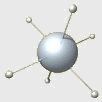There
are times when I think that getting out of touch for a little while
can be quite useful to get a sense of perspective. I feel that this
is exactly what happened over the past 2-3 years, a period during
which I did not create a lot of network-based projects. Upon returning
to my work with networked art, I realized that some changes seemed
to have occurred. Although I had seen the coming of artblogs and groups
like Discordia, I now noticed an increased interest in the implications
of XML, RSS, and news aggregators. I had understood the importance
of nomadic devices quite some time ago, but moblogs, smart mobs, mobile
phone art and locative media were not as prominent as they are now.
Also, there now are more groups using networked performance applications
to create dynamically programmable live interventions across multiple
continents. (FurtherStudio and KeyWorx are examples of this.) |
What seems clear to me is that new media is in yet another phase of
permutation. Once happening in installations, on the CD-ROM and then
in the browser, new media as a genre is once again broadening. And
this seems natural -- where there once were primarily the Usenet,
World Wide Web, e-mail etc., there now seem to be even more channels
opening through the continuing development of mobile technologies,
networked performance, networked physical installations, peer-to-peer
interventions (such as my recent download of a GNN news release as
'another' clip), data aggregation, and so on. This isn't meant to
say that browser-based work is dead, but the cutting edge of new media
has, by and large, gone beyond just the browser.
This extends
the problems that artists had to face with regard to the problematic
place that new media has traditionally occupied. New media pushed
its boundaries into new technologies that posed challenges for traditional
curators and historians; once the scholars arrive in the just established
milieu, new media pushes out into a wholly new set of technologies.
Perhaps two steps ahead of the institution just is the place of
the Avant-Garde. Perhaps the process of documenting the new work
on the Web and leaving a trail of bits to the new channels (with
an operating manual and an invitation) is the right strategy to
make people come join us and watch.
The next media revolution will not be webcast. Well, maybe part
of it will be. But the other part of it will move across our aggregators,
out onto Blackberries, into our phones, PDAs, and GameBoys, bleed
into our ears, strap itself to our bodies, emerge into real space,
converge with the traditional arts… you get the idea. New
Media as a genre makes it clear that it will not stop its chimaeric
development, and it seems to be entering yet another phase of being.
Welcome to the next level. Play begins.
|
What
seems clear to me is that new media is in yet another phase of permutation.
Once happening in installations, on the CD-ROM and then in the browser,
new media as a genre is once again broadening. |

